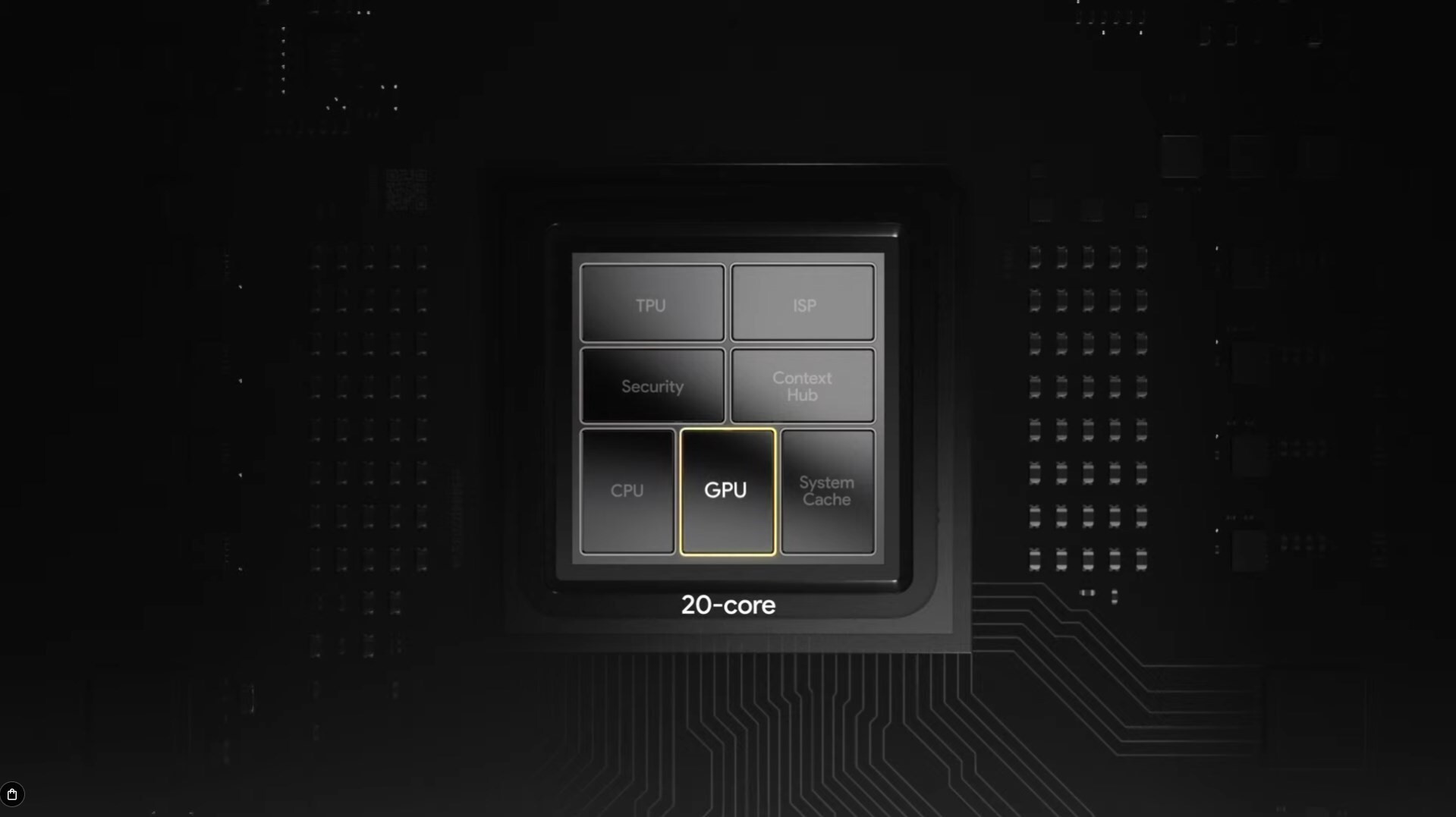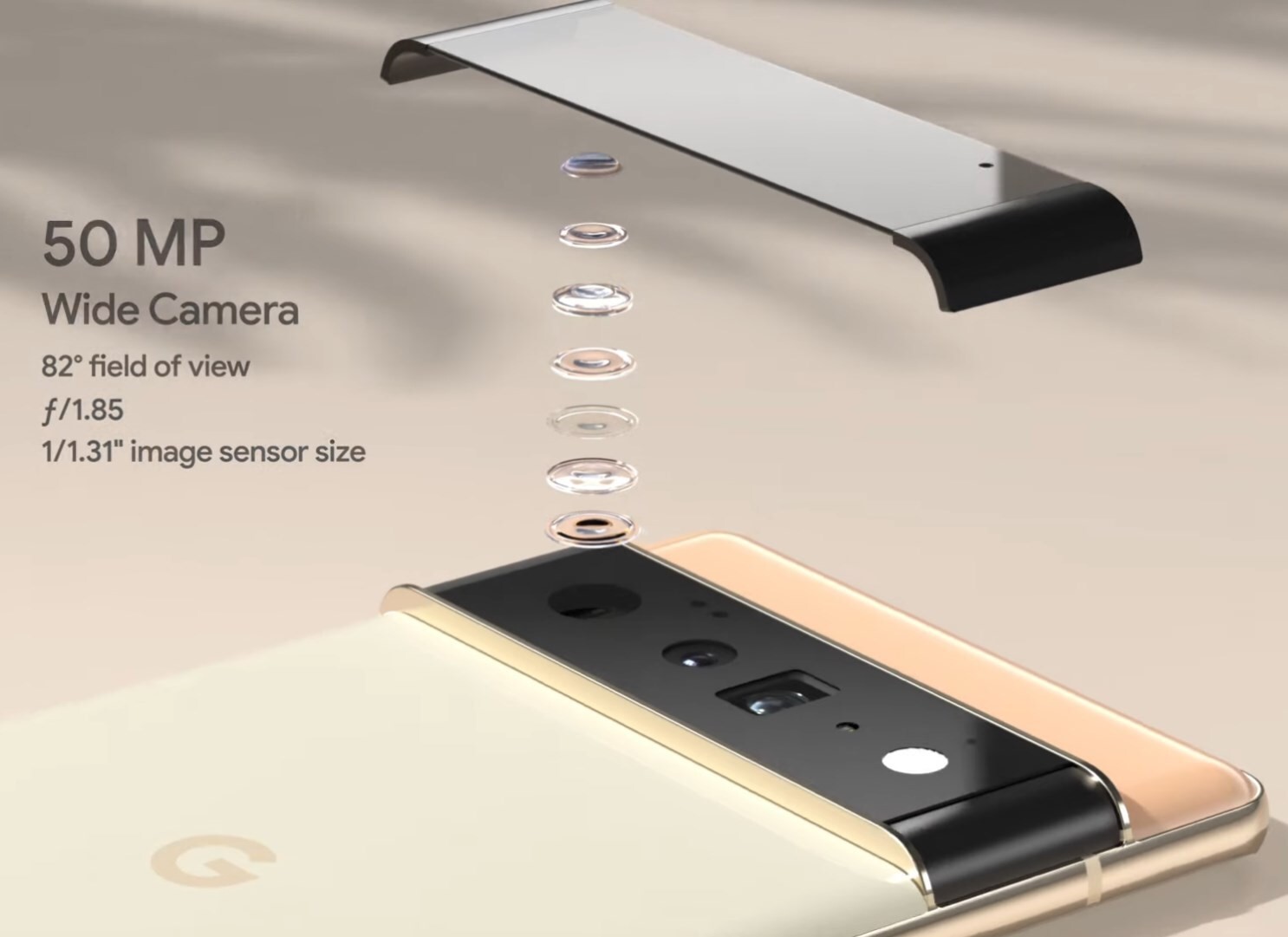Today at its Pixel Fall Launch event, after many pre-announcements and leaks, Google finally announced all the details of the Pixel 6 and Pixel 6 Pro. Some of the biggest changes to these new flagship phones from Google are updated camera modules. The Pixel 6 and Pixel 6 Pro cost $599 and $899 respectively.
Those are the starting prices for the Pixel 6 and 6 Pro, respectively. That pricing is aggressive compared to similar iPhones, Samsungs, or even OnePlus phones, especially when you consider that Google is providing 128GB of storage in both base models. (The 6 can be equipped with up to 256GB, the 6 Pro has options up to 512GB.)
Pixel 6 Tensor Processor

The other big thing to note with the Pixels is their new processor, a custom-designed ARM SoC (System on a Chip) that Google is calling Tensor. Google says it’s competitive with the Snapdragon 888 from Qualcomm, which is what you find in basically every other high-end Android phone available right now.
There’s a lot going on with this processor. The most important piece is that there’s a custom TPU (Tensor Processing Unit) for AI built right into the chip and many main processing pipelines. In addition, there are two high-power application cores, two mid-range cores, four low-power cores, a dedicated coprocessor for security, a private compute core, and an image processing core. The Pixel 6 pairs the new chip with 8GB of RAM, while the 6 Pro has 12GB.
Design
Visually, the new phones are a departure from prior Pixel phones. Though they share a common design language, that language doesn’t really connect back to the Pixel 5 or the Pixel 4 that came before. Instead, these are flashier, shinier phones, with polished metal frames (on the 6 Pro) and glossy glass backs (on both). Google is offering each phone in three different colors, but the 6 Pro’s are decidedly more “professional” (read: boring), while the regular Pixel 6 colors are clearly more fun.

Camera
The main cameras of the Pixel 6 and 6 Pro house a 50-megapixel sensor that is larger than its predecessors and bins the images down to a 12.5-megapixel output. Google claims it can capture 150 percent more light than the Pixel 5. Following the iPhone playbook, both Pixels feature ultrawide lenses with 12-megapixel sensors while the 6 Pro adds a third, telephoto lens with 4x optical zoom coupled to 48 megapixels of resolution. On the front, the Pixel 6’s selfie cam is 8 megapixels with an 84-degree field of view, while the 6 Pro is 11.1 megapixels and 94 degrees for easier group selfies.

The rear camera setup is quite the departure from prior Pixels, where the commodity hardware of Pixel cameras allowed Google to focus squarely on software optimization. Some Pixel iterations added or removed an extra lens or two, but each relied mostly on computational features.
Those software developments have brought new features to the Pixel 6 and 6 Pro as well. Google claims its reengineered Portrait Mode can better render different skin tones of wider, more diverse groups of people, naming the feature Real Tone. Google coordinated with photographers and cinematographers of color to build more diverse portraits into the image dataset of its camera models. Google says it went to the lengths of even correcting some aberrations that affect the image rendering of those with darker skin more harshly, such as implementing a new algorithm to decrease stray light, which washes out dark skin. Google says it is dedicated to building a more equitable experience across its camera and imaging products, which will hopefully be a welcome departure from past omissions in its algorithms.
/cdn.vox-cdn.com/uploads/chorus_asset/file/22939444/34_real_tone_improvements.gif)
What Google calls Face Unblur promises to use the multiple images recorded with each shutter press to keep faces sharp, even when photographing movement. It begins this process before a picture is taken, by preparing the second camera to shoot with a faster shutter speed once it sees a blurry face in the frame. It then matches the pixels and combines the images for sharper faces.
Motion Mode is designed for capturing action shots and long exposures, for aesthetics like streaking car lights across a nightscape or panning with a moving subject to blur the background and give a sense of speed. Google is using machine learning to detect the content of the frame and blur a background behind a subject in motion as they move, or to keep everything sharp as you hold still and just key elements will blur. It is once again using multiple shutter speeds from the different camera modules and combining the images. Google showed off examples of a waterfall blurring into silky wisps and a subway train blurring behind a static person on the platform. All of these are shots that conventionally require a tripod or other specialized photographic equipment, though Google is promising you can do this handheld with the Pixel 6.
/cdn.vox-cdn.com/uploads/chorus_asset/file/22938901/Magic_Eraser.gif)
Lastly, Magic Eraser will attempt to remove distracting objects and photo bombers in Google Photos. After a picture is taken, Google Photos may make suggestions to automatically remove undesirable subjects from the image. Also, users can review the shot and select distracting objects in the frame to be removed. Aside from photobombers, other examples given by Google were location scouting and removing obtrusive content from a background or foreground for a cleaned look.
Other Features
Rounding out the hardware features are the things you’d expect to find on a premium phone in late 2021. Both have wireless charging (and reverse wireless charging for accessories), IP68 weather resistance ratings, in-screen optical fingerprint sensors, stereo speakers, and fast charging support. But you won’t get a charger in the box — you’ll have to either buy a 30W brick separately or use something you already have to take advantage of that last feature.
Both phones also support 5G, Wi-Fi 6E, and Bluetooth 5.2 connectivity, though only the 6 Pro and a special version of the 6 for Verizon (which costs $100 more) have millimeter wave support. Batteries are large in both models, as well: 4614mAh in the 6 and 5004mAh in the 6 Pro. We won’t know for sure until we’re able to fully review them, but the concerns of Pixel phones coming with underequipped batteries seem to be fully in the past at this point.
Lastly, the Pixel 6 Pro also has an ultrawideband chip, similar to recent iPhone and Galaxy models.

